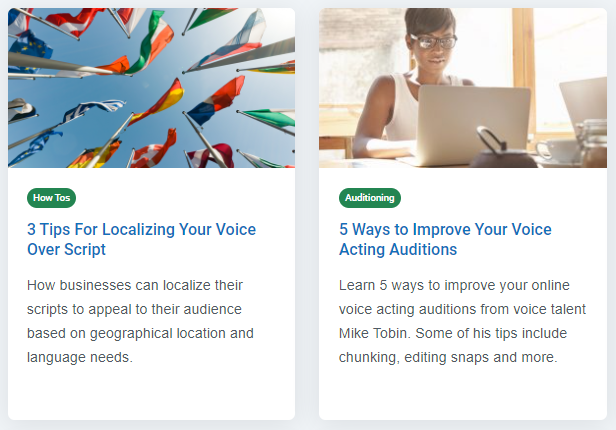If you are a content marketer, then I am going to tell you about 5+ Content Marketing Basics, so if you want to know about it, then keep reading this article. Because I am going to give you complete information about it, so let’s start.
Content marketing is one such marketing technique. In which valuable and relevant content is prepared. So that related to that content can attract more and more audiences towards itself.
But before doing content marketing you should know about Content Marketing Basics. So that you get the most out of your content marketing. That is why today I thought that you should be told about 5+ Content Marketing Basics.

So let’s get complete information about 5+ Content Marketing Basics without wasting any time. So let’s get started.
Table of Contents
5+ Content Marketing Basics: All You Need To Know About!
Content marketing is one of the most widely used digital marketing tactics. In fact, over 90% of the brands that currently have a content marketing strategy in place plan on continuing to invest in the tactic in the future.
However, there is much more to successful content marketing than just publishing blog posts or videos. You need to have a solid plan in place that will support both your marketing and your sales goals.
Let’s take a look at some basic content marketing tactics and how you can make the most of your business blog.
1. Think Beyond Keywords
When you start researching content marketing best practices, you will often come across advice that encourages you to do extensive keyword research. The point of that is to ensure you only blog about topics that are of genuine interest to your audience.
And while you do certainly want to rank well for high-traffic keywords, organic traffic is not the only source of traffic you should be considering.
Plus, writing well-optimized articles will not be worth a thing if your content isn’t interesting, actionable, helpful, and of true value to your reader. Content should exist for more than just generating traffic.
While you can (and should) do some keyword research and make sure people want to read what you have to say, you also need to remember that good blog posts can do more than generate traffic. They can generate leads, raise brand awareness, and convert. These are also goals you should be setting for your content.
Take a look at the Flamingo blog. It does a marvelous job of blending these two aspects of content marketing. When developing Flamingo’s content strategy, the starting point was to research buyer personas to establish what audiences want to know about PTO tracking software.
The next step was to create content that addresses the audience’s pain points in a way that makes the reader feel like their needs are understood.

These posts are easy to digest and offer plenty of information to readers. They are also useful and actionable, and a reader doesn’t need to read another five posts just to be able to solve their problem.
Aim for a similar blend. By all means, target keywords that will get you plenty of traffic, but also ensure you write insightful articles that humans will want to read through.
2. Understand the Fundamentals of SEO
Search engine optimization is an important aspect of content marketing you shouldn’t forget to address. Without it, you won’t be generating as much traffic as you potentially could, as search engines won’t know where to rank your website.
- Make sure to use your main keyword in your title, meta description, and headings.
- Use headings properly throughout your posts.
- Focus on optimizing for mobile search and not just desktop.
- Ensure your website loads as fast as possible.
- Make the file sizes of your images as small as you can. Also, keep the image size on the page appropriate to the space they will be taking up.
- Map out a good internal linking structure.
Of course, there’s much more to SEO than this list. Hiring an expert to go through your website and blog can ensure you don’t have any gaping holes in your strategy and that you know what you need to do when uploading future content.
3. Write for Your Entire Audience
In order for your business blog to serve its purpose (i.e., help you promote your product or service and answer your audience’s queries), you need to write for your entire audience spectrum.
Blindly creating content that you think will be of interest to the people you want to do business with won’t cut it. You could be completely misinterpreting their content needs. Plus, what is of interest to you and what you would like to tell others about your business may ultimately interest no one.
In order to cater to your audience’s needs, you first need to build multiple buyer personas and analyze the types of questions each of them will have at different stages of the sales funnel. A quiz maker helps you with content that generates and qualifies leads into segments with specific lists, which allows for more personalized and targeted sales follow-ups.
For instance, a post that caters to someone who has been a long-time user should offer unprecedented insight into the different ways they can make the most of the product or service they have purchased. On the other hand, a top-of-the-funnel reader should be offered advice on how to solve a top-level problem (and how you can help them solve it).
The Voices blog is a great example of this research done right. They have numerous possible readers – those who are looking for voices and those who provide them. Businesses that are looking for a voice-over actor won’t care about vocal warm-ups – but their voice actors will. Similarly, voice actors don’t want to know why a brand needs a podcast, but they will still find plenty of other useful content on the blog that has been tailored specifically for them.

Had the brand failed to include one of these audience segments in its strategy, the blog would have been much less successful. This way, Voices can attract both types of audiences to its blog and potentially convert them.
4. Introduce Your Product Without Sales Pressure
Your blog posts need to mention and promote your product or service; that is a given. However, they definitely need to refrain from becoming a full-fledged sales pitch. Readers who have landed on a post from social media or from a Google search don’t want to be sold to. They want to solve a problem.
You will need to find a logical reason to talk about your offer without at any point losing objectivity or credibility. You want to offer a solution and explain what the benefits of doing business with you are. Don’t make all of your posts a description of what you do and how you do it. Aim to answer questions, and introduce yourself naturally.
Take a look at the Aura blog to understand how this is done. They have written numerous posts on the importance of using a repricer on Amazon, and they always do a great job of introducing their own product. They rarely, if ever, lead with a sales pitch, and the way they speak about their product is organic and completely natural.

This should be your aim: when talking about yourself, make sure you are still providing value to the reader. If you don’t have a solution to the problem, don’t write about it. Don’t try to make a product placement fit into a post where it has no place.
Try to come up with a way to mention your product or service while doing research for each post. If you discover there is no correlation, rather write on a different topic.
5. Share Your Content on Social Media
Ideally, you don’t want your sole source of the traffic to come from search engines, nor do you want to make it the channel you invest the absolute most in. Use social media as well to generate traffic and to create some buzz around the blog posts.
Don’t merely share your post on your chosen social media channels. Focus on sparking a conversation among your followers and engaging with them. Promoting a post without offering any incentive to actually read it is the same as promoting your products or services, so don’t expect your audience to just swipe up: they need a reason to do so.
Asking a question is a great way to kickstart a debate. You can also offer advice and ask your audience how they have dealt with similar situations in the past and what they would offer as a solution. Get a little bit creative, and aim to engage, and not merely to promote.
Search Engine Journal does this on their Twitter account. They are very active and post a lot of their content, but they aren’t as good at sparking questions. They do get a decent number of likes and retweets, though, and their click-through rate is alright as well.

What you can do better than them is written better captions that will actually inspire your readership to share their own views. Building a community of your following is a great way to ensure your blog sees the kind of traffic you can convert.
6. Don’t Rely Only on Text
Finally, add some visual elements to your blog posts to infuse a bit more interest. Images or embedded videos work well, and they’ll serve to break up your text nicely.
Charts, tables, and screenshots are also a great way to present some more complex information. They can definitely help your audience understand your product better too. Ahrefs does this very well on their blog (ahrefs.com/blog), where they always throw in plenty of screenshots from the tool itself.
They do another thing well: vary their content formats to generate traffic from different sources. They have a great YouTube channel where they talk about the same subjects in the same style but in video format, which is easier to digest if you’re not in the mood to read.
Diversifying the way you communicate with your audience can help you make more of an impact. A video will be easier to follow, but it won’t be as useful if someone is trying to find the answer to a specific question. That’s what written content is for.

Try doing a podcast or adding infographics to your posts. You can even simply turn them into a slideshow. Always consider the subject matter and what format would best go with it. If it’s a chatty subject, audio can be a better solution than a blog post. If you want to share a lot of figures, an infographic can do well.
Conclusion!
Content marketing doesn’t need to be as complicated to execute as you imagine. In fact, you can create a comprehensive strategy in less than a week. You just need to first make sure that you understand your audience’s interests and needs and that you are able to cater to them well.
Read also:)
- 5+ Best AI Content Generator Tool: A-to-Z Guide for Beginners!
- How to Scale Content Production Without Dropping Quality: Full Guide!
- 15+ Types of Content for Digital Marketing: The A-to-Z Guide!
So we hope that you have liked our article 5+ Content Marketing Basics. And if you still have any questions or suggestions related to this, then you can tell us in the comment box below. And thank you so much for reading this article.
Hey,
Content Marketing is not just writing and publishing a blog.
We need to do proper keywords and that content must be readable for our audience.
Likewise, there are plenty of things to do for Content Marketing.
This content was really good to read.
Thanks for your time to give valuable and in-depth content.
You are right!
Yes right